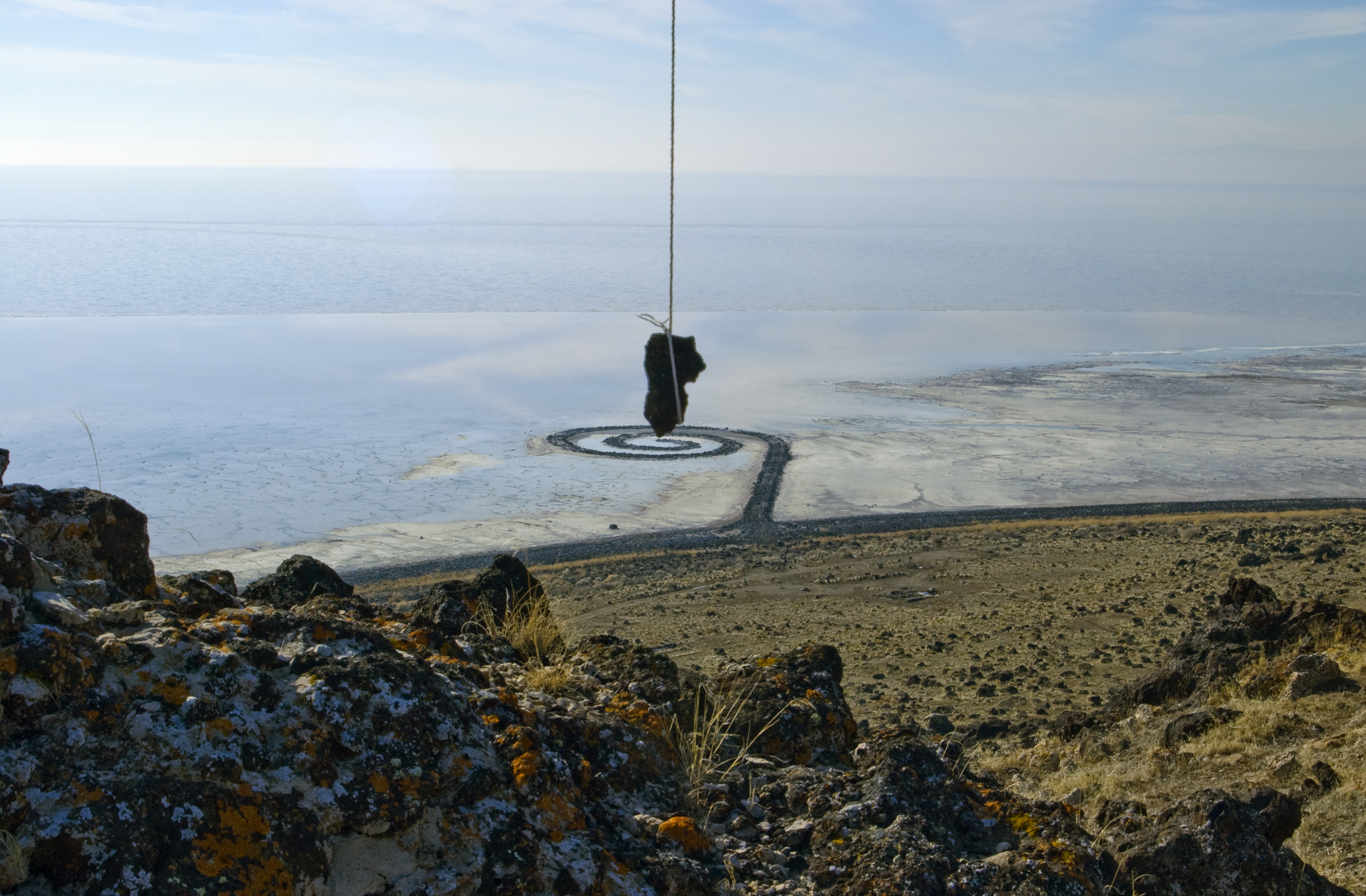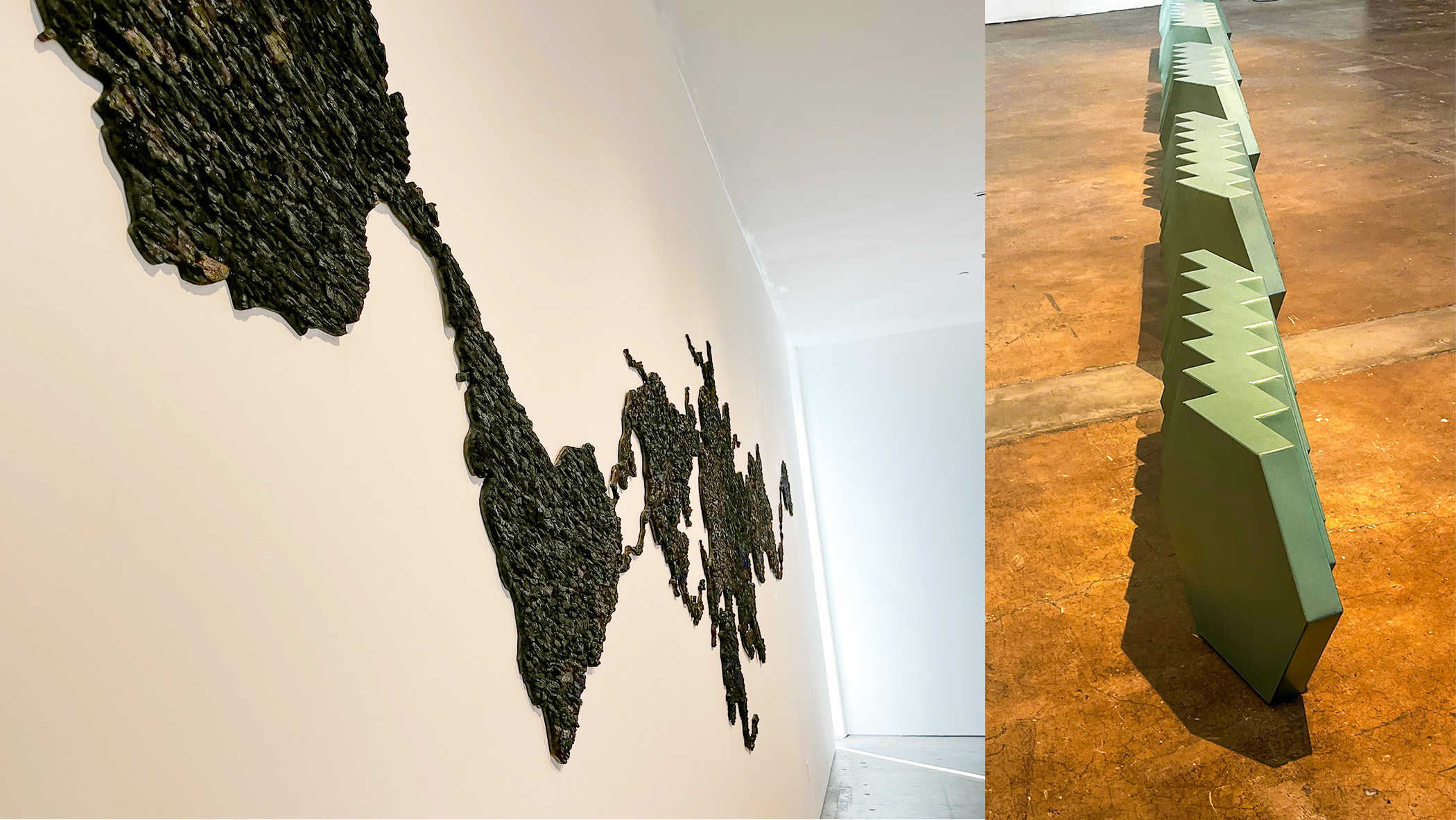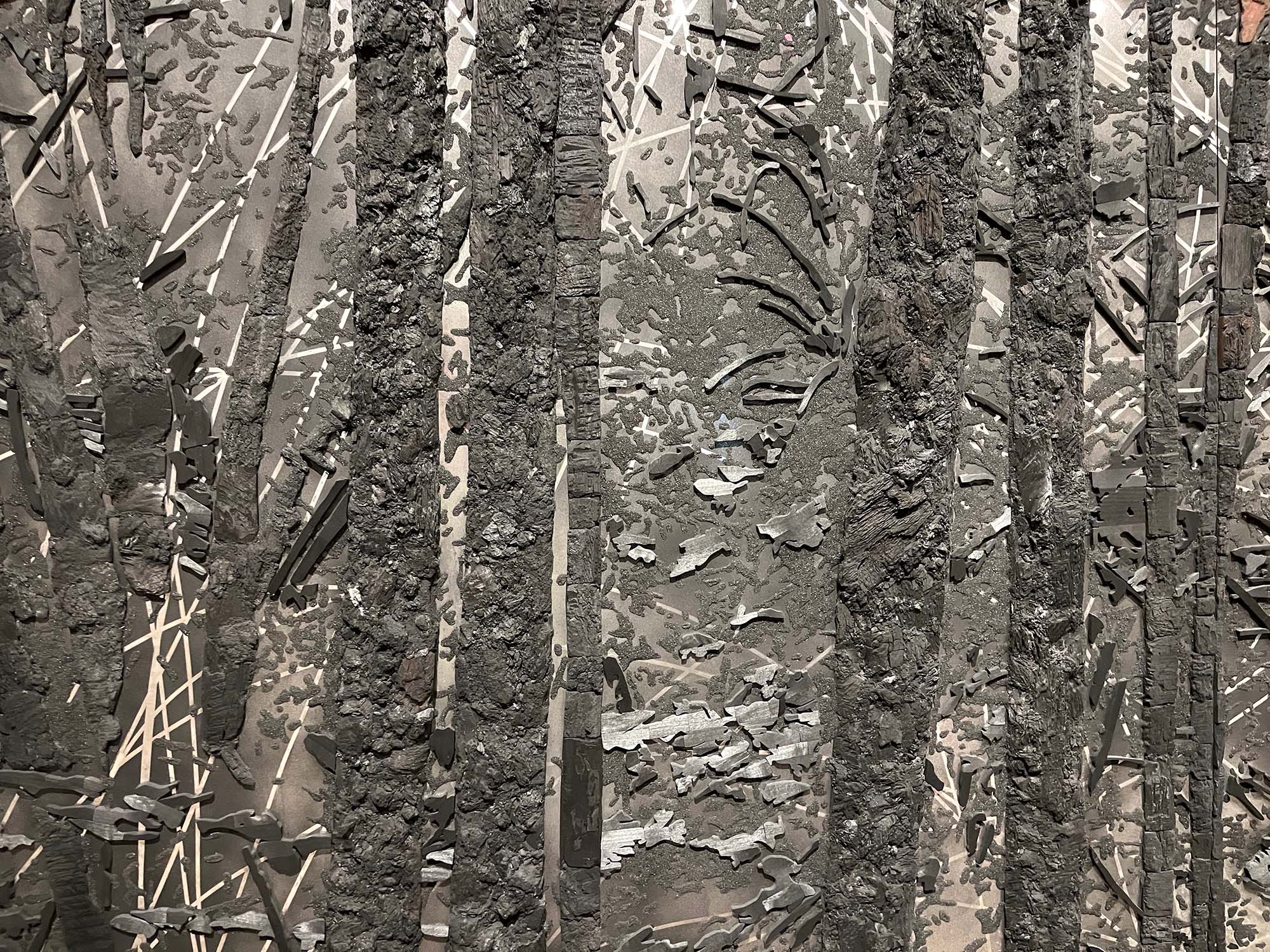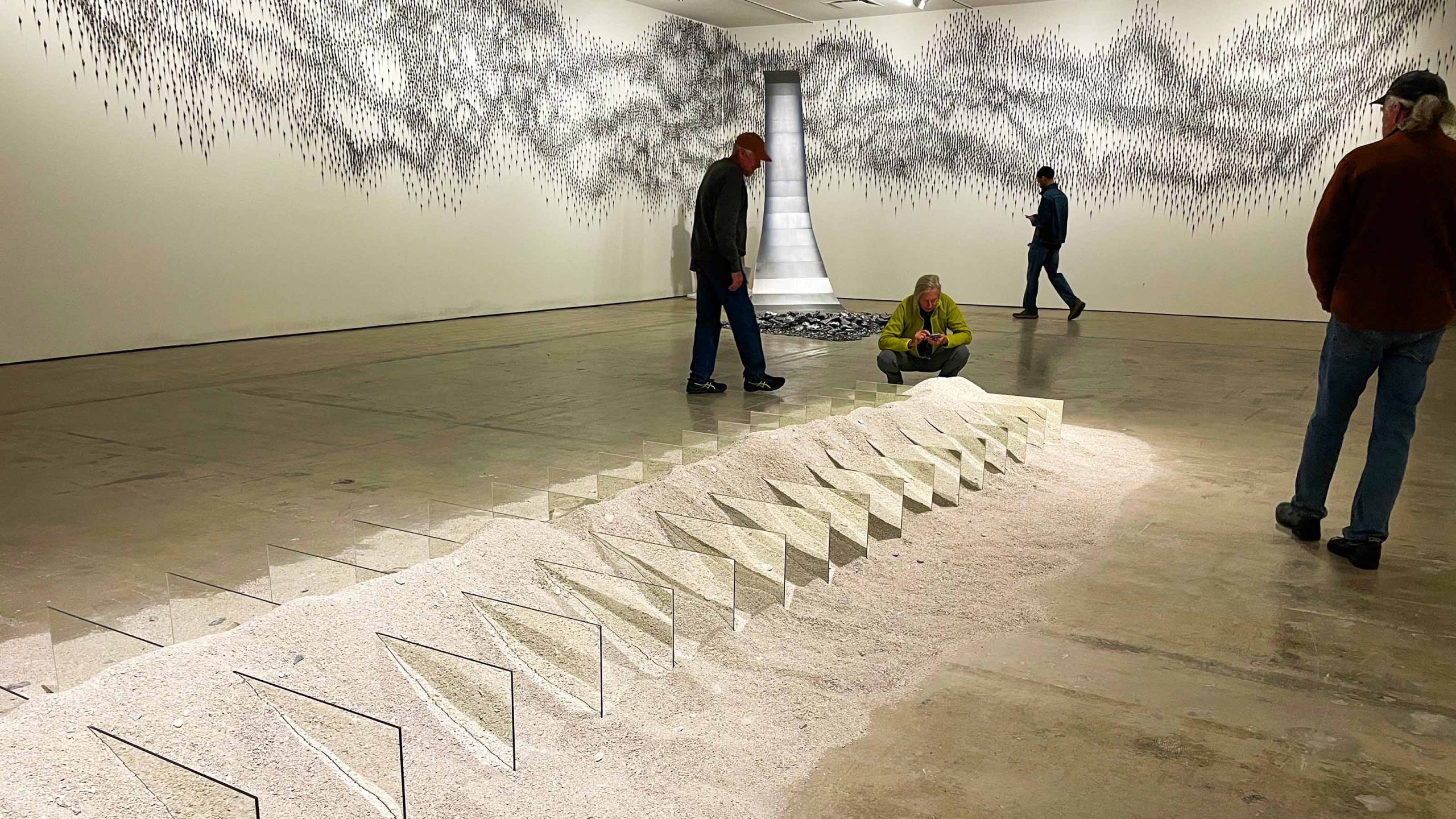July 5 to Oct 28, 2024 — In the middle of the American West, the Great Salt Lake lies as a memory of a time before the mountains lifted when this land was covered by ocean. In 1970, Robert Smithson, a New Jersey artist, drew a spiral pathway in this great lake with rocks. He used an earth mover to bring the land into the lake one load at a time making this pathway wide enough for two to walk abreast comfortably out into the lake and back to the land, until one reached the center of the form, a spiral.

In February of 2008, we visited the Spiral Jetty with a rock from home to show its size.
The monumental Spiral Jetty is in the historical part of the exhibition at SITE Santa Fe that the curators call a conversation between Smithson born in 1938 and Teresita Fernández born in 1968. In the video about Spiral Jetty, Smithson’s voice lulls us to sleep, as he calls out coordinates and compass directions. I am reminded to stop looking for words from the artist about this work, any work.
We can see that Spiral Jetty is about materials that are extracted, then arranged. And so follows every piece in this show at SITE.
We can look at simple Smithson drawings, like Mud Flow, and imagine the materials and their arrangement, and even imagine more monumental works that Smithson could have made had he not been killed when his plane crashed in Texas while working on another piece called Amarillo Ramp.
Imagine Mud Flow in different shape drainages, differently textured landscapes. Imagine Mud Flow as a soil improvement device after wildfires. In 2024, imagine an earth conscious land art bringing fast growing ground cover and erosion control to disturbed ground.
We could easily have missed the Mud Flow drawing and not had that thought, with so many dazzling pieces in this show. Smithson’s drawings are low tech and low key. His sculpture installations are on the floor, and equally easy to miss. In one corner of a gallery is a piece that sits like the pile of rocks it is. We give it a glance and move on. Or, we come close and see an infinite object created with mirrors. Materials arranged.
Teresita Fernández’s work is of the present but likewise is about materials. Extracted then arranged. Set together with Smithson’s work, which is very subtle if not downright boring, a Fernández work is alluring, has us moving around it, in and out to understand what is causing the visual effect. The materials are disguised. Charcoal become maps. The map’s geography is suggested by the texture of the wood that was burned to become the charcoal. The maps seem familiar. Flat, but blown flat from some other rip in the globe than the International Date Line.
This map along with Smithson’s hexagons are at the beginning of the exhibition, and we probably open the brochure, and learn this is a conversation across generations. We are not sure language is involved in this conversation. Enough of the brochure. We need our languaged mind to hush and look, just think about how things are made. Charcoal, maps, the hexagon, steel. Language isn’t involved. Material uses are.
Here’s the first juxtaposition of Smithson/Fernández:

Let’s look at another in another larger room – let’s just say this is the apex of the exhibition:
And another view of these two pieces:
Poem from the text of the brochure written (I assume) by curators Teresita Fernández and Lisa LeFeuvre. Their original text is available on the SITE website on the exhibition page. Last line from Susan Howe’s My Emily Dickinson. The present is October 28, 2024.
Conversation Between Two Artists
Questions how landscape is defined,
entanglements between
Critically, who has agency in spaces?Grapple with surface shaped by humans,
Impacts on geological histories
Three decades seeing and deep timeBrings, bridging the past into the present
Investigations are rooted in conceptual
Insistence on situating site in today practiceslandscape in relation to human beings
urgencies of the present
Unraveling points of connection and departureA desire to reimagine historical assumptions
complexities of art addressing the land.
Who polices rules of grammar?




